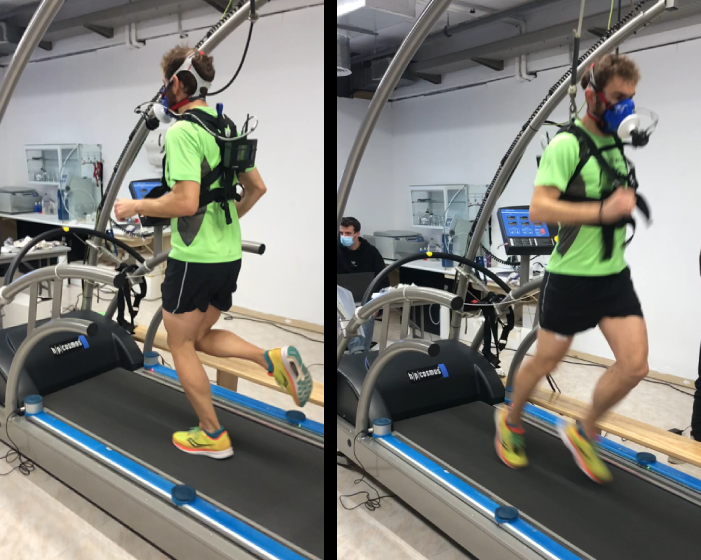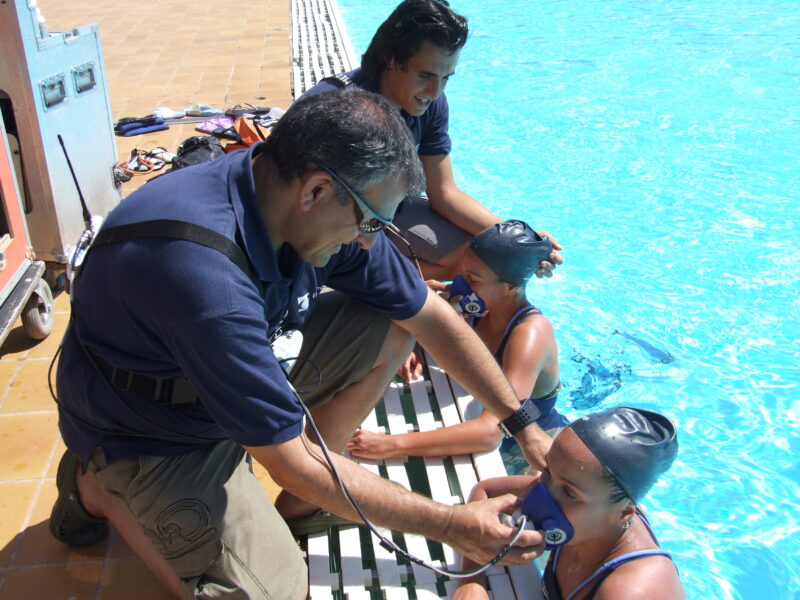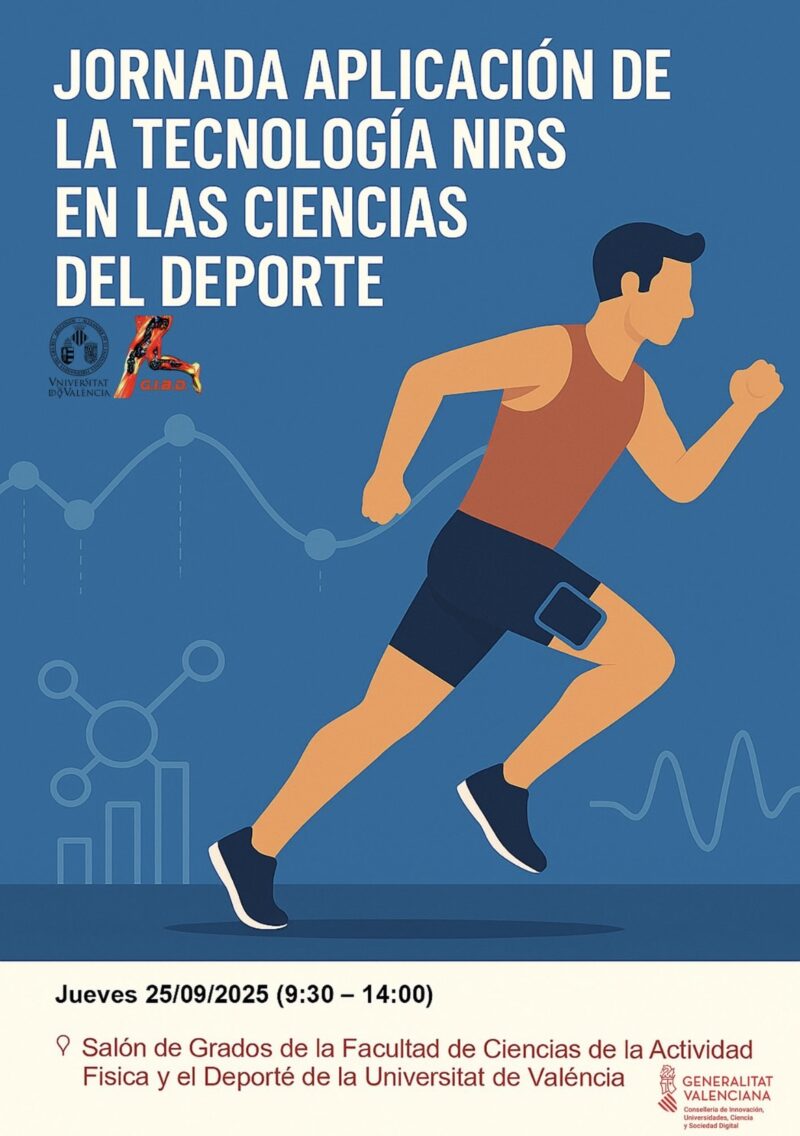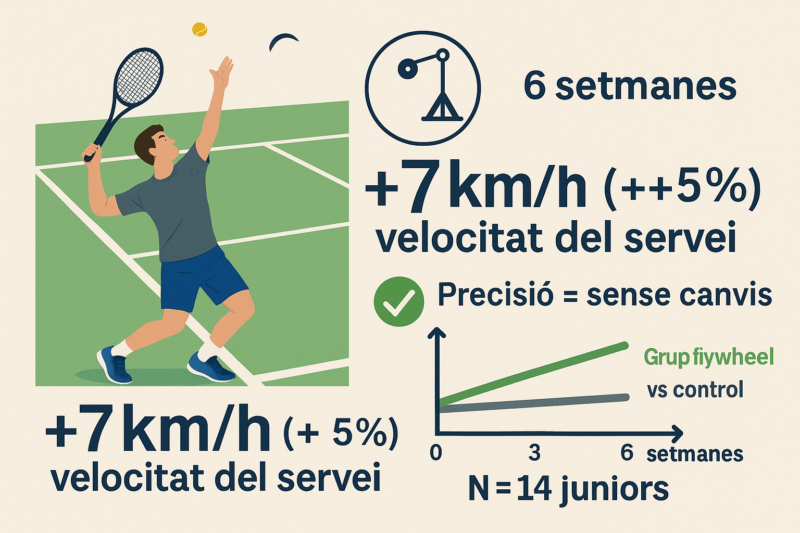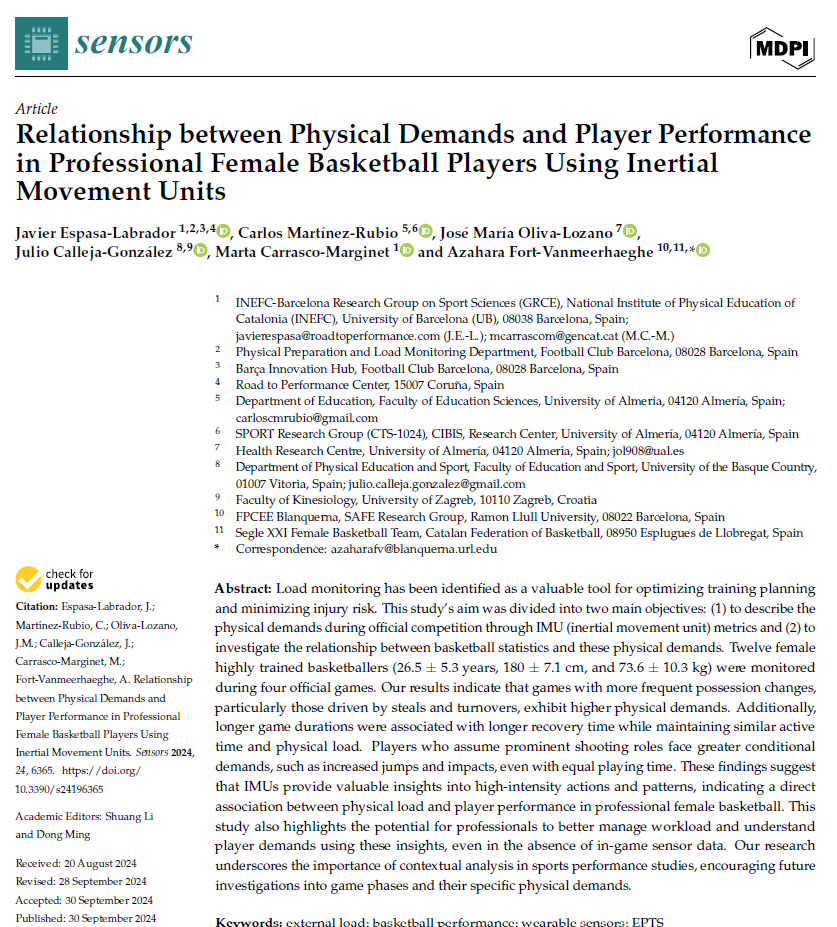
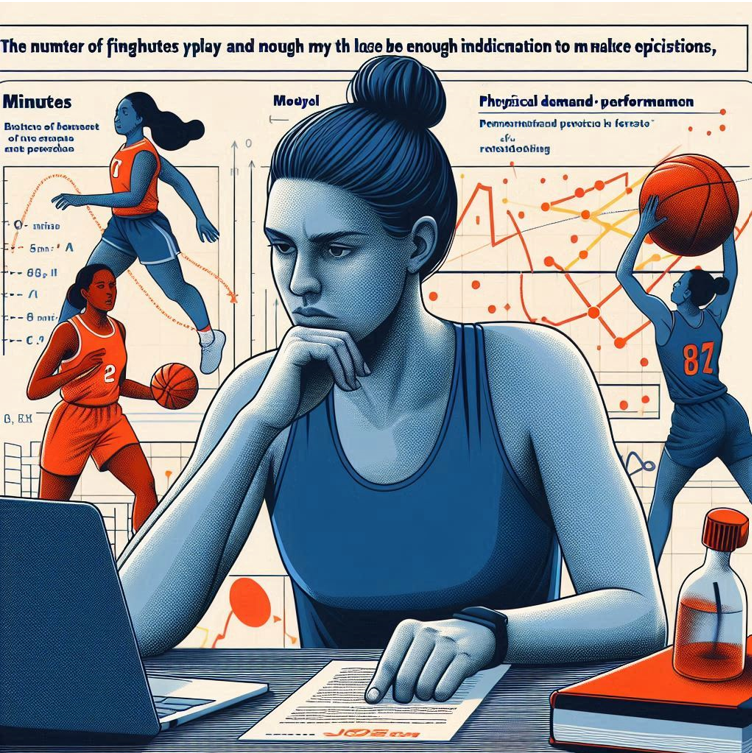
Imatge geenerada amb intel·ligència artificial (Copilot de Microsoft)
Javier Espasa-Labrador, membre del GRCEIB, després de doctorar-se a l’INEFC de Barcelona el passat 9 de maig de 2024, ha publicat l’últim dels articles del seu treball de tesi doctoral titulat “Relationship between physical demands and Player performance in professional female basketball players using inertial movement units“. Aquesta investigació tracta de conèixer quina és la relació entre la càrrega física i el rendiment en el joc del bàsquet, amb l’objectiu de trobar indicis que facilitin la presa de decisions als professionals de l’àmbit del rendiment esportiu que no poden accedir a recursos tecnològics de gran cost per a la monitorització de la càrrega.
La col·laboració de tots els autors ha estat imprescindible per acabar obtenint una discussió amb una aplicació pràctica directa a l’àmbit esportiu.
Abstract: Load monitoring has been identified as a valuable tool for optimizing training planning and minimizing injury risk. This study’s aim was divided into two main objectives: (1) to describe the physical demands during official competition through IMU (inertial movement unit) metrics and (2) to investigate the relationship between basketball statistics and these physical demands. Twelve female highly trained basketballers (26.5 ± 5.3 years, 180 ± 7.1 cm, and 73.6 ± 10.3 kg) were monitored during four official games. Our results indicate that games with more frequent possession changes, particularly those driven by steals and turnovers, exhibit higher physical demands. Additionally, longer game durations were associated with longer recovery time while maintaining similar active time and physical load. Players who assume prominent shooting roles face greater conditional demands, such as increased jumps and impacts, even with equal playing time. These findings suggest that IMUs provide valuable insights into high-intensity actions and patterns, indicating a direct association between physical load and player performance in professional female basketball. This study also highlights the potential for professionals to better manage workload and understand player demands using these insights, even in the absence of in-game sensor data. Our research underscores the importance of contextual analysis in sports performance studies, encouraging future investigations into game phases and their specific physical demands.


